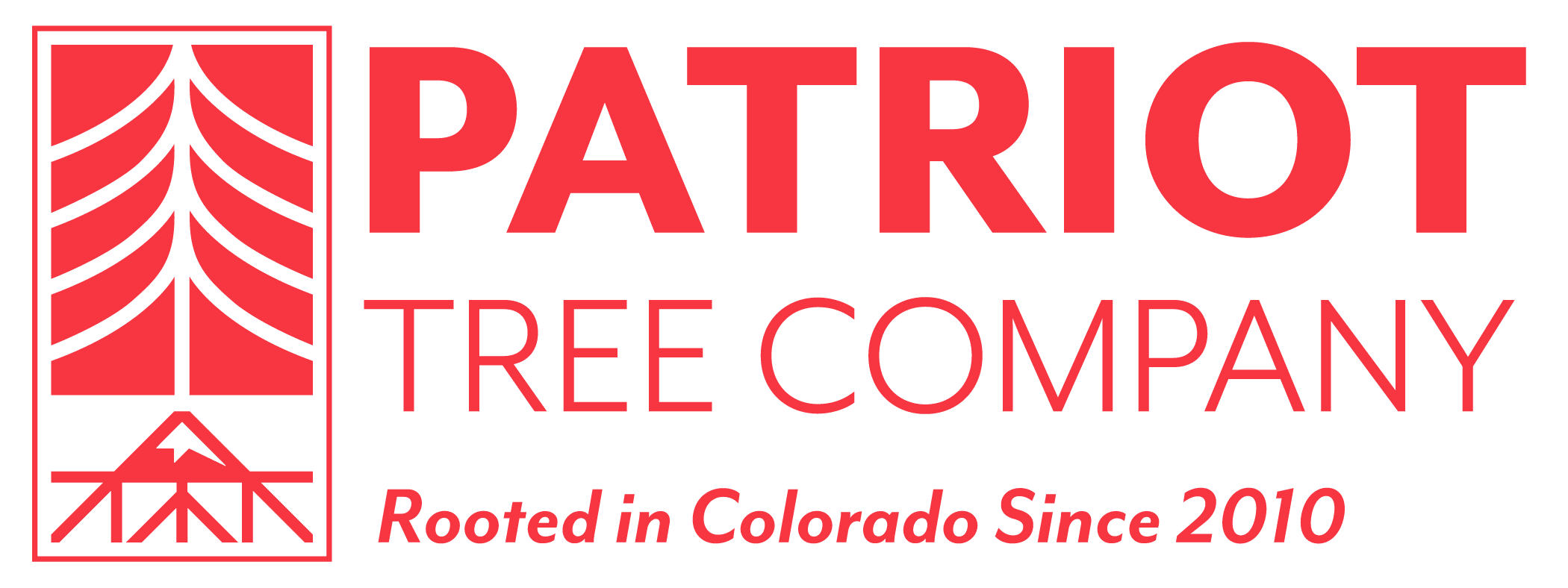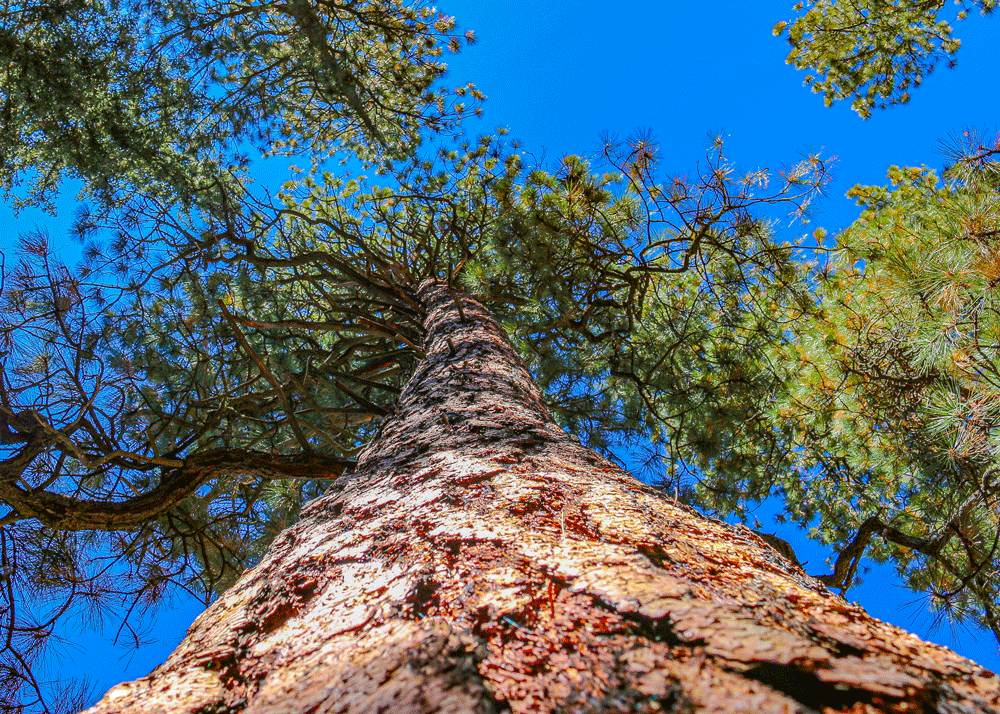Greetings clients of Patriot Tree Company, potential clients, tree lovers, and the general public who just want to know more about growing healthy trees. This is the first blog post in a series that I will be attempting to keep up with at least once a month into the future.
My name is Erik Gustafson. I am an ISA Board Certified Master Arborist and an owner of Patriot Tree Company based here in Louisville Colorado. I have been studying and working with trees in various capacities for the better part of a decade and a half.
The goal of this blog is to share observations from the field so that folks can make well-informed decisions concerning the care of trees on their properties and so that they can be aware of current issues affecting the trees in our community.
Why is growing healthy trees on the Front Range so tough?
Growing healthy trees on the east side of the Front Range of Colorado can be difficult! Take a look at old photos from 100 years ago of the area where your community exists, and I bet there will be something very noticeable about the image. There are no (or very few) trees! Unless you live along a river, seasonal stream, or historic irrigation path, this area was mostly grasslands east of where the foothills start to rise up. There are many reasons for this. There is usually not enough available water in the ground, the soil chemistry and structure is all wrong, and the climate is too harsh (winds and extreme changes in temperature). Additionally, trees need completely different soil biology than the one that has evolved in grasslands over the millennia.
Trees grown in their native forest settings have developed relationships with specific soil fungi and bacteria that allow them to better take up water and nutrients from the soil, and when they are put in places that are mostly void of these organisms, they simply cannot acquire the resources necessary to grow and grow well.
So how do we deal with these issues and start growing healthy trees?
One place to start is to plant tree species that are adaptable to our climate and soil. There are close to zero tree species that are native to your backyard, but take a drive down 6th Ave Pkwy in Denver (American elms), walk through a City park in Longmont (cottonwoods and green ash), or visit Green Mountain cemetery or the University of Colorado in Boulder (oaks and other species), and you will see big, healthy, mature trees growing in the Front Range. Though not native (with the exception of Eastern plains cottonwoods), these species have proven themselves to be adaptable to our harsh environment. My guess would be that you have never seen a 100-year-old red maple, European mountain-ash, tulip tree, or ginkgo thriving here. And though quaking aspen and lodgepole pine are native trees very close to here, they are not very adaptable to the drastic changes in climate and soil that exist between the foothills and the plains and tend not to live to their potential in a backyard in Erie (for example). For a list of recommended tree species for the area, check out: List of Recommended Trees for Front Range Colorado.
How does eastern Front Range soil make growing healthy trees difficult?
Next, we can take a look at the soil and how to make it better for growing healthy trees. The single most important issue that I see time and time again, especially with newly planted trees and trees that are not so well adapted to our area, is water. As I write this post, Boulder County has received approximately 30-50% of our average precipitation (average is already low for most tree species) for the months of December and January. We are currently hovering between severe and extreme drought. I highly recommend winter watering, especially of evergreen species, to all of our clients. Though this is not a service that we currently offer, it is a relatively easy task, even for tree novices. Deep root watering is by far the best way to get water directly to tree roots. Check out this page from CSU Extension: Winter Watering for Trees.
Another way to improve soil quality is to do a once per year Soil Enhancement treatment for sensitive trees or if you are in an area with particularly poor soil. Our Soil Enhancement treatment is NOT a fertilization treatment in the traditional sense of fertilization. It includes beneficial soil microbes, humic and amino acids, and a water surfactant to help condition the soil and make it better for tree roots to grow and absorb water and nutrients. Our soils generally do not lack in nitrogen, and fertilizing trees with a high nitrogen based fertilizer is unnecessary and can cause undesirable growth and create issues with tree physiology.
Our soils generally do lack in available iron (keyword is “available”) and many tree species do benefit from fertilization that is high in chelated iron, zinc, and manganese. These species include red maples and their hybrids (Autumn Blaze), red oaks, and ornamental pears to name a few. Other means of improving soils can include vertical mulching, soil aeration, and soil decompaction with an AirSpade.
How does the Front Range climate impact growing healthy trees?
Climate is certainly a big part of the equation of growing healthy trees, though it is the least manageable. We can’t make it less windy, we can’t stop extreme temperature swings, and we can’t stop the inevitable May snowstorm. For these issues, we can prune trees in ways that make them more resilient to these weather events. Many tree species we plant are native to forests in the eastern half of the United States, a generally dense situation with lots of competition and shade. When they are planted in an open, full sun location in your front yard in Colorado, they can grow in ways they are not adapted to and can become very dense and heavy. By performing tree pruning operations in very specific ways, we can make them less prone to breakage in strong winds or heavy late or early season snows.
As for freeze damage caused by extreme temperature swings (think 75 degrees for a high temp one day, 5 degrees the next), there is not much we can do but plant resilient species and promote good health. Trees that are drought-stressed are more susceptible to this type of damage, so proper watering will only help them deal with extreme temperature swings.
So much to talk about and what I have here just served to get the conversation going about all the different challenges we face growing healthy trees on the Front Range.
I will do my best to keep up with this blog and write about the current issues we are dealing with as tree care professionals. Until next time, stay safe out there in the midst of our current social, political, and health climates, and go out and deep root water your trees on a nice day!
Erik Gustafson
ISA Board Certified Master Arborist RM-7467B
Co-owner/General Manager, Patriot Tree Company



